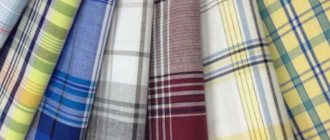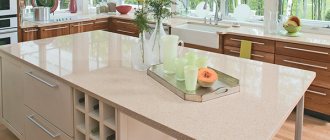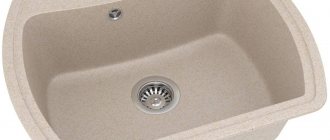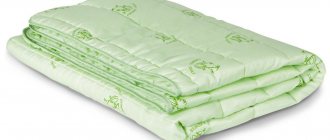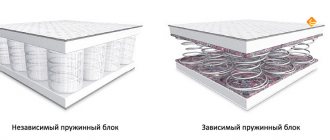Good health directly depends on the quality of your sleep. To get a good night's sleep, you need to choose a mattress that will meet the requirements for a good sleeping place. Recently, products filled with polyurethane foam (PPU) have become popular among buyers. They are distinguished by a high degree of comfort and a budget price. It remains to be seen whether they are as safe for health as the manufacturers say.
What is polyurethane foam?
Polyurethane foam is a synthetic material with a cellular structure that belongs to the group of gas-filled plastics. In everyday life it is often called “foam rubber”, but this is not true. Polyurethane foam is of high quality, it is more elastic and durable.
Thanks to a unique production technology (plastics, being in a liquid state, foam and harden), the material acquires a porous structure that contains a large amount of air (up to 98%). Polyurethane foam layers are lightweight, which greatly simplifies their operation.
Structure
The PPU mattress consists of foamed plastic with small cells containing polyurethane inside.
New production technology allows modern mattresses to be more elastic, resilient, and at the same time not cause allergic reactions. Thanks to these properties, the orthopedic effect is achieved. The polyurethane foam mattress does not deform under the influence of human weight, it does not sag and remains stable. Such models, most often, have anatomical memory properties, which allows them to distribute the load evenly over the entire area of the mattress, due to which the sleeper’s muscles relax. This is followed by a full, healthy sleep.
If there is a need to transport a PU foam mattress, it can easily be rolled up and placed, for example, in a car.
Areas of application of polyurethane foam
PPU or polyurethane foam, due to the presence of numerous pores, has high thermal insulation properties and a high degree of elasticity, which determined the scope of its application. The material is widely used in:
- construction as insulation;
- in the production of upholstered furniture and mattresses;
- as a filler for soft toys;
- for the production of sponges for cleaning needs;
- filters;
- rollers for painting work.
For upholstered furniture, mattresses, higher quality polyurethane foam is used. In other areas, lower grade material can be used.
Strutoplast is a modern filler for orthopedic mattresses.
Good afternoon, dear readers!
Recently, I have noticed that people’s interest in such a filler as strutoplast is beginning to actively grow. Unfortunately, there is very, very little useful information about struplast, but I tried to collect all the most relevant information today. In the article we will consider the following questions: what is struplast, compare struplast with modern mattress fillings, and, of course, we will discuss the rules of care in order to increase the service life of these products. So, struplast, in scientific terms, is a material made from polyester fibers glued together thermally. Low-melting fibers are used as a binding material. Not everyone understands what kind of polyester fibers they are and what they look like. In simple terms, these are artificially created fibers, which are now very actively used in the textile industry, and they are bonded at high temperatures. You can visually observe them in the photo. Artificial (polyester) fillers are not inferior in their properties to natural ones, and in some ways even surpass them. We'll talk about properties a little later.
Appearance of polyester fiber
Strutoplast is a homogeneous fabric consisting of three layers. One load-bearing and two fastening. In the middle (bearing) layer, the fibers are packed vertically, hence the name. “Struto” is a method of vertical fiber laying. Another name for this wonderful filler is “non-woven independent springs”; I think it’s clear why this name is used. However, if any of the above is not well understood, do not hesitate, dear friends, ask in the comments.
Today, struplast is one of the best materials for the manufacture of orthopedic mattresses in its price category. It is in no way inferior to cotton wool, foam rubber and coconut coir. By the way, struplast and foam rubber are very close in price-quality ratio. Of course, when compared with spring orthopedic mattresses costing from 15,000 rubles, then struplast may be inferior in some aspects (lifetime, thickness, rigidity of the product), however, in defense of struplast, I will say that with proper and timely care , a mattress made of struplast will last quite a long time, and the price is much cheaper.
Visualization of the work of strutoplast fibers
Component composition of polyurethane foam
To make polyurethane foam, a mixture of two polymers is used:
- polyisocyanate;
- polyol.
The substances are mixed in a liquid state and undergo a foaming process. They are the main components of the solid part of the material, which accounts for a smaller part of the total composition. Additional elements are
- flame retardant additives;
- phenol;
- tertiary amine;
- toluene;
- phosphorus.
Most of the foam is made up of gaseous substances. This can be ordinary air or carbon dioxide, depending on the scope of application of polyurethane foam.
Advantages
- Hardness
A wide range of mattresses that differ in density allows customers to choose a model that suits their hardness. Excessively soft polyurethane foam is suitable for short-term sleep or rest, since prolonged exposure to such a base can negatively affect the spine. - Strength
One of the features of foam rubber is its porosity, which provides tear resistance. It is advisable to eliminate mechanical loads such as jumping on the surface, which will significantly extend the service life. - Viscosity
Mattresses can be purchased for people with greater weight due to the high degree of viscosity of the material. One clarification: you need to choose dense polyurethane foam. - Weight
Polyurethane foam mattresses are lightweight due to the porous structure of the material. The properties of such models resemble spring versions. - Cost
The bulk of foam mattresses are presented on the market at prices affordable to consumers. Among the cheap options, you can choose products that are small in thickness and quite soft, for the manufacture of which inexpensive materials are used.
Properties of polyurethane foam
Polyurethane foam has both positive and negative properties. The latter are not critical when using the material in construction or in the production of cleaning, cleaning, and washing products. But we should not forget that they can be dangerous.
For upholstered furniture and mattresses, high-quality polyurethane foam is used, which has practically no negative properties.
Positive properties
- Low thermal conductivity.
- Waterproof.
- Vapor tightness.
- Thermal insulation characteristics.
- Waterproofing properties.
- Noise insulation.
- High adhesion.
Negative properties
- Does not tolerate direct sunlight.
- It's getting dark.
- It dries out and crumbles.
What is the beauty of strutoplast?
Let's talk to you about the main positive properties of struplast. All the most important properties are listed below:
- Since the material is artificial, it is 100% anti-allergenic. This point is significantly important for people who are allergic to natural fillers. Therefore, if you are allergic, do not hesitate, take it.
- During production, mattresses made from strutoplast are impregnated with a special non-flammable solution, thanks to which mattresses made from strutoplast will not become a source of fire.
- Strutoplast has fairly good elasticity, due to which it retains its original shape for quite a long time.
- adds greater comfort to sleep due to good heat exchange and air circulation inside the product.
- has a long service life, naturally with proper and timely care.
- Another advantage is the addition of natural fibers, namely, various types of wool, cotton, seaweed, etc., into the structure of the filler. This plus is typical for people who love everything natural and are not used to sleeping on artificial material.
- Strutoplast cuts perfectly. If suddenly you do not have a standard bed and constantly have difficulties choosing a mattress, then this option is perfect for you. It is enough to remove the filler from the case and cut off what is not needed.
Perhaps these are all the most relevant advantages that I managed to find. If you have any additional information, we will be glad to hear about it in the comments.
Is polyurethane foam in a mattress harmful?
Recently, a large number of rumors have appeared about the dangers of mattresses with polyurethane foam filling. They are explained by the composition. Anyone would be frightened by chemical dyes, phosphorus, formaldehyde and even arsenic.
But it must be taken into account that all these substances reacted during the foaming process and after the foam hardened they became completely harmless. They can only become active when the material is heated to 200 °C or during combustion. In an apartment it is impossible to obtain such a temperature, which means that substances hazardous to health will not be released.
It is better to pay attention to the positive characteristics of polyurethane foam mattresses:
- elasticity;
- anatomical;
- hypoallergenic;
- affordable price.
The last argument turns out to be the most effective. It is this that makes mattresses with polyurethane foam in demand among consumers.
Thickness
The thickness of foam mattresses can start from 7 cm and reach up to 30. We do not recommend using mattresses below 10-14 cm as an independent sleeping place for an adult.
A mattress with a foam thickness of 10 cm or more is an excellent and affordable alternative to models made from other materials. For its manufacture, the manufacturer usually chooses high-density polyurethane foam, which guarantees:
- correct distribution of the load on the body,
- rapid return of the material to its original state, regardless of the strength and duration of the load,
- adjustment to the anatomical features of the owner.
Pros and cons of a polyurethane foam mattress
Like all mattresses, models with polyurethane foam filling have their advantages and disadvantages. All that remains is to analyze and decide whether their advantages are important for the consumer and whether the disadvantages are so critical. To reduce the number of shortcomings, it is recommended to study information about the types of polyurethane foam and their properties.
Advantages
The main advantage of polyurethane foam mattresses is their price. With other positive characteristics, they turned out to be worthy competitors to expensive models with natural fillers or materials created using innovative technologies.
Polyurethane foam mattresses
- elastic;
- breathable;
- have excellent orthopedic characteristics;
- light weight, which simplifies operation.
By choosing a model with PU foam filling, you get a budget mattress that will delight its owners.
Flaws
There is only one drawback - the risk of exposure to direct sunlight. This is especially important to consider in mattresses with removable covers.
The opinion about the harmful vapors emitted by the material is controversial today. If the mattress is not a fake, then we can safely say that it is safe for the human body.
Polyurethane foam brands
The range of polyurethane foams is quite wide. PU foam grades range from extra-hard to soft, highly elastic and viscoelastic (shape memory foam).
- Extra-hard (HL) are perfect for people with a lot of weight.
- Reinforced (EL) are great all-around brands that will appeal to those who like moderate-to-firm support.
- Standard (ST) brands are a budget, less elastic, not very durable option.
- Soft (HS) are not suitable options.
- Viscoelastic (VE) and highly elastic (HR) belong to the expensive segment, with a pronounced anatomical and orthopedic effect. They are able to accurately follow the curves of the body and at the same time provide the necessary support.
- WATERLATTEX polyurethane foam (HR* 6030 LL) feels closest to natural latex.
Reference! For more information about the characteristics of different brands, read the article Do-it-yourself foam mattress - an interesting and exciting process.
Health benefit or harm
Companies and sellers are confident that PU foam mattresses are good for human health, regardless of age. However, in reality, polyurethane foam mattresses without an additional layer of padding are not able to provide the necessary support to the spine. Even the most impeccable type of memory foam filler does not have orthopedic properties like natural latex or coconut coir.
If you want to buy a block that will last for many years, you can give preference to other types of packing without sparing money on your health. In the desire to save, you can lose more.
Such a mattress is contraindicated for a child, no matter how manufacturers prove otherwise. The whole point here is the need for a solid foundation in order for the curves of the spine to form correctly (which polyurethane foam cannot provide on its own). Considering that the back is formed almost until adulthood, it is worth providing the child with the right mattress (made of coir, latex or a combination of both).
A block based on polyurethane foam is harmful to newborns, preschool children and adolescents.
Moreover, it does not matter what type of block structure the seller offers:
- monolithic - not rigid enough so that the baby does not take an unnatural pose (curves the back, deforming the development of curves);
- compositional - perfectly complementing the edges or defining a solid base, but does not contribute to the proper development and growth of skeletal bones;
- anatomical - accepts all the contours of the body instead of helping them develop;
- with springs - covers steel elements, but does not protect the child from injury during increased activity.
Polyurethane foam mattresses - benefit or harm
Human health directly depends on the condition of the spine. By exercising, following a diet, watching your posture and your weight, we are doing a good deed and giving the spine health. But all efforts are often dashed by dangerous polyurethane foam mattresses. The thing is that orthopedists strongly recommend sleeping on fairly rigid bases - excellent orthopedic mattresses with coconut filling, independent spring blocks and other goodies are produced especially for this purpose.
As for foam mattresses, they cannot provide healthy conditions for our back. They bend greatly, and the spine bends along with them - over time, this leads to its curvature and the appearance of degenerative changes, which we can see on X-rays and tomograms.
Foam (polyurethane foam) mattresses are too soft. Many people find it very comfortable to sleep on a soft base. But the body itself does not think so - if by the morning you feel numbness, tingling in your muscles, stiffness in movements and a complete lack of mood, you should know that your foam mattress is to blame.
Flaws
- The service life of polyurethane mattresses is shorter than that of mattresses with springs or coconut coir filling.
- When exposed to high temperatures (smoldering, combustion), the material releases toxic substances.
- According to some experts, foam rubber is not 100% safe when using mattresses.
- Polyurethane foam has low moisture transfer, so drying takes longer than desired.
Flammability of polyurethane foam in a fire
According to GOST 30244–94, wood or polymer-based materials are flammable. Polyurethane foam is a material with a low flammability class. By type of flammability there are:
G1 - slightly flammable.
This type of polyurethane foam does not burn, is resistant to fire, but can lose weight when exposed to fire.
G2 - moderately flammable.
Does not support combustion, goes out on its own.
G3 - normally flammable.
In the absence of flame it goes out on its own.
G4 - highly flammable.
Burns quickly and may become a source of fire.
Numerous tests carried out confirm the fire safety of polyurethane foam. On the company’s website you can find components for polyurethane foam with different types of flammability: from G1 to G3. "Khimtrast SKN-30/141 G3" - normally flammable, used for seamless thermal insulation of walls, attics, and attics. Low-flammable materials include Khimtrust SKN-60 G1, which is used for insulation of pipelines, refrigerators, and buildings.
Mineral wool also does not burn, but releases formaldehyde into the atmosphere. Expanded polystyrene has a flammability class of G4: it is easily flammable, burns completely, and when smoldering it has a characteristic pungent odor. Polystyrene foam is inferior to polyurethane foam in terms of fire safety. Please note that combustion products of any material can be toxic. This depends on the composition, as well as how long it takes to fade.
We compare polyurethane foam and spring mattresses and draw conclusions
Based on all available information, we will make a step-by-step comparison of the species. This will help you clearly determine which mattress is better.
Comparison of models
Guided by this article, you will determine which model is better to choose, whether a spring or polyurethane foam mattress will satisfy your requirements, and you will be confident in your final choice. Let's start a step-by-step comparison.
Comfort and orthopedic properties
The health of your back depends on your choice, which means this point is the most important when comparing. Let's consider what is better for the spine: spring or polyurethane foam. We will not talk about classic spring options - it has already been mentioned that they do not have orthopedic properties.
Despite the fact that both remaining models have orthopedic properties, doctors recommend that teenagers and athletes purchase products with an independent spring block. It is believed that such a mattress reduces the risk of developing osteochondrosis.
Which mattress to choose for a child or the elderly: spring or polyurethane foam? If you remember, independent spring units will not withstand jumps and feel quite hard to the touch. Therefore, here it is better to choose PPU.
When choosing what is best to buy for back support: a spring or polyurethane foam option, you need to be guided by those for whom this product is being purchased.
Strength and Durability
Regardless of the model, when purchasing, you should make sure of its quality. Request certificates and other documents for the product. This will give you the guarantee of long-term use. If we talk about comparative characteristics, then in this area the most durable mattress will be made from polyurethane foam.
Ventilation and breathability
All models listed in this article have high and medium ventilation. Spring products exhibit the best breathability properties, but the cellular structure of polyurethane foam also ensures air exchange. In addition, polyurethane foam is hypoallergenic.
Reliability and service life
In terms of reliability and wear resistance, the polyurethane foam mattress wins. It is not afraid of misuse, is easy to clean and does not deform over time.
List of sources
- setafi.com
- vyspalsa.ru
- www.podushka.net
- stroy-podskazka.ru
- www.syl.ru
- www.spets-stroy-portal.ru
- matras.wiki
- like2sleep.com
- plusiminusi.ru
- ibeds.ru
- dekoriko.ru
How to do it yourself?
Every home owner can make a foam block. Moreover, for this, the components themselves, patience and accuracy are enough. To please family members with a homemade foam mattress, you will need special glue, scissors, foam rubber, textiles for the cover, zipper, sewing machine, thread, cord (for the mattress cover), padding polyester.
Before starting work, the material must be selected correctly, otherwise the finished product will not last even several years. If you are planning a special design with an additional effect (thermoregulation, varying degrees of rigidity, “winter-summer” option), you should take care of purchasing a layer of felt (sheep’s wool), coconut coir or latex, spandbond, linen (choice of material in accordance with the selected effect).
Having purchased a foam rubber layer and additives of identical size, they are glued together, then the edges are trimmed and the cover is sewn. Ideally, you can use a mattress pad from an old block, ripping it apart and cutting out parts based on it. If there is no such cover, measure each face of the block, give allowances for the seams, grind down the parts, leaving a hole for a zipper in one of the side seams. Having sewn in a zipper, you can pack the foam.
